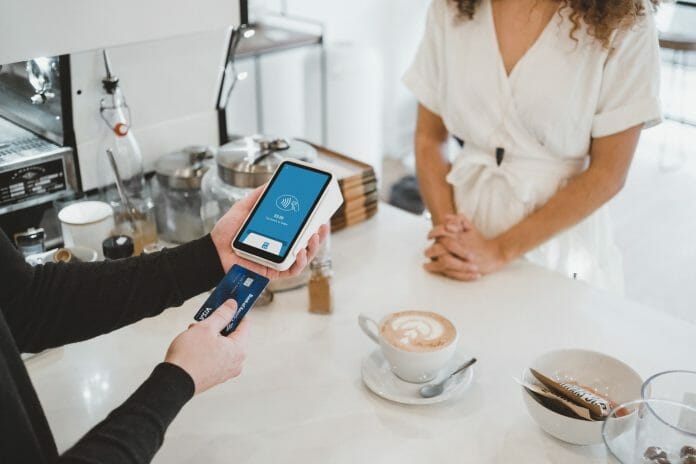BusinessToday speaks to Amanda Chin, Chief Executive Officer of Revenue Monster, a financial technology company aiming to create a more integrated digital ecosystem in Malaysia
By Poovenraj Kanagaraj
The digital services ecosystem in Malaysia is bigger than ever. Recognisable players such Boost, GrabPay and Touch’n Go eWallet are among those that have led the way in the digital financial services segment. Joining them, logistics and healthcare services have also transitioned over to the digital world, offering users to do just about everything from their smartphones.
While digitalisation may be all the hype now, and thanks to the acceleration brought on by Covid-19, the growing ecosystem is also more disintegrated than it was. As a result, businesses both old and new would have to source for different digital services from various channels.
Hoping to simplify the process for SMEs in the country, Malaysian based financial technology company, Revenue Monster is aiming to integrate all digital services in the country into one platform and at the same time, fast-track the transition for businesses into the fully-digital ecosystem.

“I think there are several factors SMEs have had a slow time in adopting the digitalisation process pre and post Covid-19. The first being the lack of understanding followed by being forced to understand what’s essential for the business and now it’s keeping up with the urgency brought on by the virus,” says Amanda Chin, the chief executive officer of Revenue Monster.
“Even ourselves as an organisation, we are trying to simplify the process. And we are doing it by removing all these jargons and hoping to pitch businesses a more simplified platform. It’s a very complex industry and it requires some level of familiarity,” Amanda shares. Her team of engineers down the hall may have just figured out on how to achieve it.
One of the more common questions by SMEs, Amanda says, is if they can recover the cost they have invested by subscribing to different digital services. Some even ask if they can do it based on a hybrid model.
“SMEs need to also know which aspects of their operations needs to go digital and by subscribing to all in one platform such as Revenue Model, they will be able to do so,” she says.
“Before Covid, there were all these social media and payment platforms, but they were all disintegrated. Merchants who wanted partners for different functions would have to subscribe to different platforms. These services were not developed in a post-Covid world,” Amanda points out.
The financial technology platform is hoping to bring together digital services across the nation onto one platform, creating an integrated ecosystem in the process.
“There needs to be an ecosystem of services between merchants and partners and one that will also allow them to list all their services and products. A platform that will enable them to have a more seamless payment experience,” says Amanda, adding that besides ensuring that all of these services are integrated on platform, it also needs one point of contact.
With over 5,000 merchants subscribed to the platform, merchants can access 13 e-wallet services and two delivery partners, GrabExpress and Mr Speedy. Notable names like Starbucks, U Mobile, Proton, Tealive and Mydin are among the merchants subscribed to the platform.
“A majority of our customers are in the F&B segment and during the MCO, we also figured that there’s not going to be any payments. So, we came up with the idea of à la carte,” Amanda tells BusinessToday.
à la carte, one of the services available for F&B merchants, allows them to create an online store with a single URL. Merchants will be able to push their services remotely through a QR code and at the same time offer their clients a pick-up option as well as a drive-thru option.
With à la carte, merchants only have to undergo one registration process to activate their access to the multiple payment channels which includes e-wallet services as well as credit and debit options.
“Ultimately, I think the rest of the delivery channels charge high commission fees and we gathered this through the F&B players who mentioned that they would not be able to recover the delivery costs,” the chief executive officer says. Merchants subscribing to Revenue Monster only pay typical MDR charges.
Aside from being able to create an online store, merchants will be able to experience a seamless payment offering through the platform’s e-invoice service. “Lately there have been a rise in e-invoices especially with people needing to go cashless and during the MCO, a majority of merchants operating from homes had to collect payments remotely proving once again how disintegrated the ecosystem is,” Amanda tells BusinessToday.
With the e-invoice service, merchants will be able to share the payment link generated by the platform via messaging platforms, Whatsapp or Facebook Messenger.
“Through Revenue Monster, we hope to enable merchants experience a smoother digital transition and at the same time create additional revenue streams. The key here is to make sure they have a good understanding of profit and loss,” Amanda says.
As for plans in the next coming months, the chief executive officer hopes to streamline operations and work towards getting a sizeable market share and to ultimately become the ecosystem’s lead driver.









